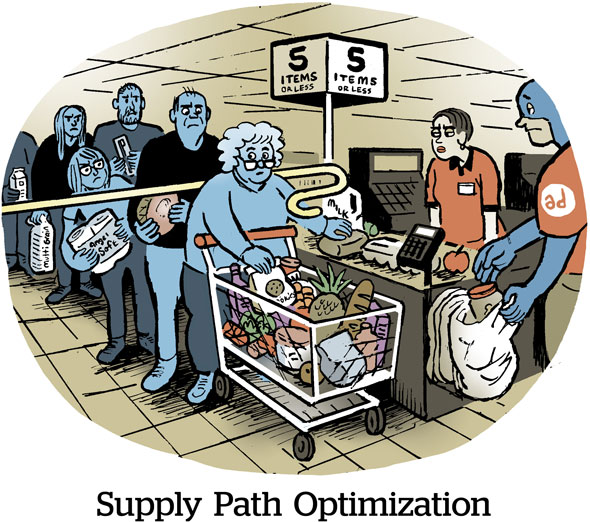PubMatic isn’t the only supply-side platform diving headfirst into the CTV gold rush.
While Magnite’s total revenue last quarter rose 15% to $149 million, revenue from CTV advertising in particular jumped 18% YOY to $55 million.
Most of the company’s CTV growth “significantly exceeded our guidance,” CFO David Day told investors during its earnings call on Wednesday. Rising demand for programmatic sports inventory and “continued growth in ad serving were significant drivers” for Magnite’s streaming biz, he said.
And by ad serving, Day means supply-path optimization (SPO).
Direct connections
A massive growth driver is ClearLine, the SPO product Magnite launched last year that offers direct paths to streaming and online video supply.
“Our direct buying platform is continuing to gain traction [with] numerous agencies and brands,” said CEO Michael Barrett.
Magnite’s SPO traction is especially coming from buyers that are shifting ad budgets into streaming from linear TV, not just tied to search and social.
Traditional TV ad buyers seek out direct deals to guarantee ad placements on certain networks, and they aren’t used to the supply fragmentation and bid duplication that plague present-day programmatic.
Which explains why Magnite spent a decent chunk of its earnings call flaunting a recent partnership with Mediaocean, a TV ad buying platform that has connections with most of the major TV ad buying agencies. Barrett noted Magnite rushed to finalize the deal ahead of the TV upfronts next week.
Through Mediaocean, buyers representing linear advertisers can add streaming inventory to their media mixes with direct access to supply available within ClearLine. CTV publishers integrated with ClearLine include Disney, Warner Bros. Discovery, Fox and DirecTV.
According to Barrett, more buyer adoption for products like ClearLine also signifies the importance of SSPs compared to demand-side platforms during this era of ad tech disintermediation.
Supply or demand
While DSPs exist to help buyers nab better deals for inventory, they also have overlapping pockets of inventory and charge a pretty penny for their services. Which is why buyers want “direct connections” with suppliers, Barrett said, citing The Trade Desk’s OpenPath, an SPO product born in 2022.
Similar things can be said about SSPs, but the difference is that SSPs exist to help publishers make as much money on their ad inventory as possible. Since it’s more natural for publishers to integrate with SSPs, that’s where buyers are more likely to find a wider array of premium inventory sold directly, Barrett said. It’s a self-serving stance, but, hey, it makes sense.
Agency buy-in for SPO initiatives is also attracting more publishers looking for unique demand, Barrett said.
Still, SPO doesn’t just pit SSPs against DSPs. It pits SSPs against each other.
Most SPO-related scrutiny falls on SSPs fighting the notion that they’re a bunch of dumb pipes, which has SSPs scripting more pitches about why they’re better than their competitors.
In Magnite’s case, it pins its future success on the combination of its SSP and ad server products. Combining the two offerings minimizes hops in the supply chain, which minimizes ad repetition and maximizes inventory yield, Barrett said.
Though this isn’t unique to Magnite – FreeWheel and Beachfront both have similar pitches. PubMatic, meanwhile, touts a focus on private over open auctions because it more closely resembles the direct buying dynamics of traditional TV.
What all these SSPs have in common, though, is they’re all racing for a higher share of linear ad dollars moving into streaming.
According to Barrett, “differentiated SSPs” with the best connections between “disparate demand” will be the ones that come out on top.















